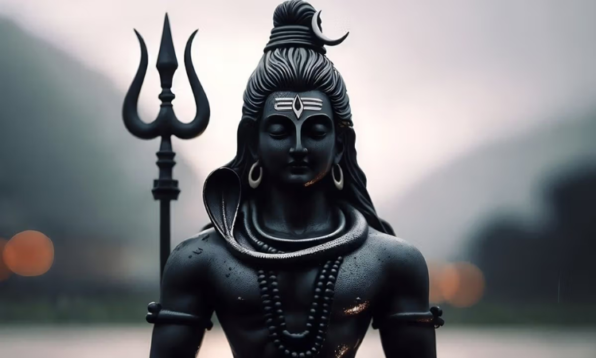The monsoon in India is marked by the Shravan maas or Sawan. An auspicious month for Hindus, Sawan doesn’t just welcome the monsoon season. It is also a pious month to worship Lord Shiva and Goddess Parvati. The fifth month in the Hindu calendar, the Shravan maas, falls in the middle of July, and this year, it will be celebrated from July 11-August 9, 2025. This holy month is marked with fasts on Mondays and festivals like Janmashtami, Teej, Naag Panchami, Rakshabandhan and more. But what is the significance of Sawan 2025?
Significance of Sawan 2025

The Shravan month is considered an auspicious time to worship Lord Shiva. In this month, all Mondays are celebrated as Shravan Somvar, and people, especially women, undertake the Shravan Somvar vrat to get a good life partner. Devotees offer bel patra, flowers, holy water and milk to Lord Shiva during these fasts.
According to Hindu mythology, the Samudra Manthan, or the churning of the ocean in search of amrit, took place during the Shravan month. During the churning of the ocean, the devas and the asuras came together as they wanted the elixir of immortality or amrit. But before the elixir came out, the ocean churned various other things, including jewels, Goddess Laxmi, animals, and Dhanvantri. Along with these, a deadly poison, halahal, also emerged from the ocean.

The halahal had the power to destroy the entire universe, and anyone who came in contact with the poison was annihilated. To stop the destruction, Lord Shiva drank the halahal, which turned his body blue. Goddess Parvati, concerned about the poison spreading throughout her husband’s body, pressed Lord Shiva’s throat, thus limiting the poison to his throat and turning it blue. This is how he came to be known as Neelkanth.
Due to the potency of the poison, Lord Shiva’s throat was burning, which is why everyone offered him water and milk to reduce the poison’s effects. Since the entire episode took place in the month of Shravan, Lord Shiva is worshipped during this month, along with his consort, Goddess Parvati.
Festivals celebrated during Sawan 2025
Since Sawan is an auspicious month, it is a great time to start something new. It is also a month of celebrations and festivities. Here are some of the most popular festivals celebrated during Sawan.
1. Raksha Bandhan

Raksha Bandhan is often celebrated on the last day of the Shravan month, which is the full moon day. According to legends, priests would tie a sacred thread to the wrists of people who needed protection. It was believed that the rakhi would protect the wearer. In the Mahabharata, Lord Krishna suggested that a sacred thread be tied to Yudhishthira’s wrist to ensure his victory in the war against the Kauravas. In the same text, Draupadi tied a strip of cloth to Lord Krishna’s bleeding hand, for which he blessed her with his divine protection.
It was only during the 20th century that the significance of Raksha Bandhan changed. Today, the festival celebrates the bond shared between siblings. Sisters usually tie a rakhi to their brother’s wrists, showing their desire to protect their brother. The brother, in turn, vow to protect their sisters from all trouble.
2. Hariyali Teej

Hariyali Teej is a festival that celebrates the union of Lord Shiva and Goddess Parvati. On this day, women worship Goddess Parvati for conjugal bliss. The festival also marks the onset of the monsoon. On this day, married women fast for the well-being and longevity of their husbands, while unmarried women observe a fast for an ideal life partner. On Hariyali Teej, married women dress in green and adorn their hands with mehendi.
Related: Dear Brides, Not Wearing Mehendi Isn’t Apshagun, You Can Opt For Alta Instead
3. Nag Panchami

Nag Panchami is a day when Hindus worship the serpent Gods as they are considered symbols of power and fertility. It usually falls two days after Hariyali Teej. As part of the festival, serpent deities made of silver, stone or wood are given a reverential bath with water and milk, and people seek their blessing for their family’s welfare.
4. Varalakshmi Vrat

Varalakshmi Puja is a day during the Sawan month when the goddess of wealth and prosperity, Goddess Laxmi, is worshipped. According to legends, Varalakshmi was incarnated from the Kshir Sagar or the Milky Ocean from which devas and asuras churned the elixir of immortality. Varalakshmi Vrat is primarily observed by married women, especially in Southern India. Married women perform this vrat for the health and longevity of their husbands and children. It is believed that worshipping Varalakshmi is equivalent to worshipping Ashtalakshmi – the eight forms of Goddess Laxmi.
Featured Image Source
Related: Guru Purnima 2025: What Is The Significance Of This Spiritual Festival?

 Web Stories
Web Stories













